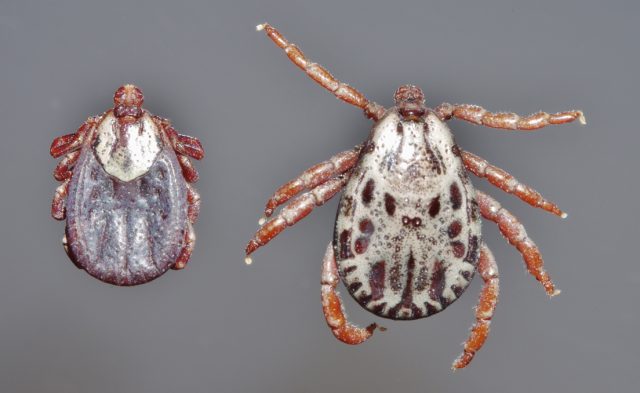
Ticks are already commonplace in Colorado — and they’re becoming more prevalent.
But the state’s terrain can make tracking them difficult, which is why researchers at Colorado State University built a study that would offer a better understanding of tick populations in the state.
The study, published in the November issue of the peer-reviewed journal Ticks and Tick-borne Disease, indicates that the Rocky Mountain wood tick, the most prevalent tick species in Colorado, is expanding into new parts of the state. It also confirmed a new tick species not documented by the Centers for Disease Control (CDC) in Colorado: the American dog tick.
The Rocky Mountain wood tick was found in five new counties (38 total) and the American dog tick in 16 new counties (16 total).
Most of the data analyzed was from people sending in tick samples, known as “citizen scientists.”
But it’s not just the spread that concerns scientists and health experts; it’s the diseases these ticks can carry with them.
“The broader impact of this study is that these ticks can transmit pathogens that can cause disease in humans,” says Emma Harris, who is a research scientist at Colorado State University in the Department of Microbiology, Immunology and Pathology. Harris was not a co-author on the study, but works in the Center for Vector-Borne Infectious Diseases at CSU and is familiar with the study.
Both ticks are known to carry the bacteria that causes Rocky Mountain spotted fever and tularemia (“rabbit fever”), two potentially life-threatening diseases.

These findings are representative of a growing national trend: ticks are moving to new areas, and their populations are growing.
The CDC attributes the spread of ticks to a variety of things, including changes in land use patterns like reforestation and suburban development, and climate change (their life cycle and populations are strongly influenced by temperature).
Every year, nearly half a million people are diagnosed and treated for a tickborne disease, and between 2004 and 2016, the reported cases of bacterial and protozoan tickborne diseases doubled.
With no active surveillance program for ticks and tickborne diseases in Colorado, their population and distribution were somewhat unknown.
Part of the goal of the CSU study was to get a better picture of the prevalence of these ticks at the county level across the state. When surveillance maps are accurate and up to date, they can help inform the public of their risk of exposure to ticks.
“This study is a red flag that, on the county level, it is necessary to increase tick surveillance locally and, on an individual level, to take precautions and know the symptoms of tickborne diseases,” said Daniel Salkeld, co-author of the study, in a press release.
The study relied on citizen-scientist data collection, a form of passive tick surveillance offered by the Bay Area Lyme Foundation that increases the geographic scope and lowers costs.
Harris says the willingness of people to submit ticks was instrumental in collecting data that show the spread of the two tick species in Colorado.
“Just being able to engage the community is really great, because then individuals are able to learn the risks and understand where they’re encountering ticks the most,” she says.
She encourages folks to take preventative measures like tick checks or putting clothes in the drier after an outdoor adventure.
But, not every tick you encounter hosts a harmful pathogen. Harris says people shouldn’t be alarmed by the expansion of the American dog tick and the Rocky Mountain wood tick — it should just inform people to “know the risks for the day.”
“It’s a more well-rounded understanding of the environment around us, which is an amazing thing,” she says. “That’s the power of science.”














